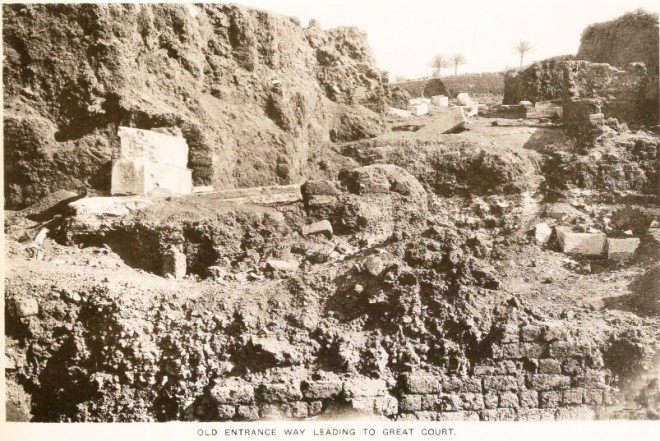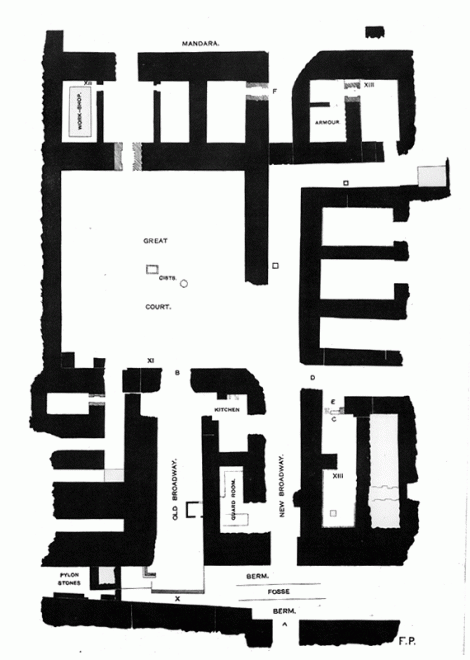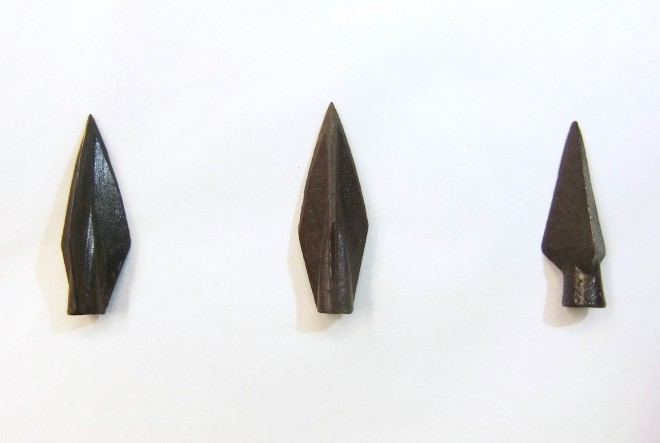When people think of ancient Egypt, they often imagine pyramids, golden mummy masks, and sphinxes. While all of these things were present in ancient Egypt, they do not tell the complete story.
Smaller, often overlooked objects tell us much about ancient Egypt. Some of these less glamorous items can illuminate less understood periods of Egyptian history and I’ve had a chance to study some of these objects while I’ve been interning at National Museums Scotland. My particular interest is the Late Period (664-332 BC), which came after the glories of the New Kingdom and the strife of the Third Intermediate Period. Some scholars overlook this time, thinking that it is unimportant or less interesting compared to the accomplishments of earlier periods. Those scholars are mistaken.
During the Late Period, native Egyptian kings of the Saite Dynasty overthrew foreign Assyrian control and established a unified Egypt. This accomplishment is comparable to those of the great kings of the Old, Middle, and New Kingdoms who also united Egypt after times of division. However, over 100 years after the Saite unification, the Persians arrived and conquered Egypt. The native Egyptians won their freedom once again, but the Persians retook control of the country. Shortly afterwards, Alexander the Great arrived and freed Egypt from Persian rule. From then on, Egypt was ruled by the Macedonian-Greek descendants of Alexander’s general Ptolemy, until the Roman conquest.


A number of objects in the collection at National Museums Scotland were excavated at a particularly interesting Late Period site. The Palace of Apries was built by the fourth Saite king, Apries, in Memphis, Egypt. Memphis was the capital city of ancient Egypt for most of its existence. Even when it wasn’t the capital, Memphis was a major religious centre for Egypt. The Palace of Apries is just one of the remarkable sites in Memphis. Sir Flinders Petrie excavated the palace in 1909 for the British School of Archaeology in Egypt. He discovered the remains of a huge fortified palace on a platform 13.66 metres high. Based on objects found in the palace, it was likely in use throughout the Late Period and into the Graeco-Roman Period. Some of these objects were given to the National Museum by the British School of Archaeology in Egypt, in return for sponsorship of the excavation.
![Door hinge found in the Palace of Apries, Memphis, Egypt.]](https://blog.nms.ac.uk/app/uploads/2016/04/bb.jpg)
One particular object in National Museums Scotland may attest to the monumental nature of the palace. This bronze door hinge was found in the southern platform area of the Palace of Apries. It is 458mm wide and 445mm long, and it originally held a huge, cedar door. We don’t know which building the hinge came from, and the excavation records are not detailed enough to give us more clues. It is possible that the hinge initially came from another city such as Sais, which is mentioned in the inscription, before being reused in the palace at Memphis. The hinge is inscribed with the name of the third Saite king, Psamtek II. What is especially interesting about the door hinge is that Psamtek II’s name is inscribed over a different king’s name, Nekau II, who was Psamtek II’s father and predecessor. Why did Psamtek II feel the need to erase Nekau II’s name? Successions did not always go smoothly in ancient Egypt, and the door hinge may show an example of that. But the reuse and re-inscription of predecessors’ building materials was common and may not necessarily have had a sinister motivation.
![Armour-scales found in the Palace of Apries, in Memphis, Egypt.]](https://blog.nms.ac.uk/app/uploads/2016/04/aa1-660x443.jpg)
Petrie excavated these five iron armour-scales, along with over 2000 others, in one of the back rooms in the Palace of Apries. The longer scales have a central ridge, and holes along the top and bottom edges for threading. According to Petrie, they were probably used on areas of the armour that needed less flexibility. The short scales with rounded bottoms were probably for areas that needed more flexibility. The scales would have originally been sewn onto a tunic, overlapping each other.
Just like the Late Period itself, the scales have a history of misunderstanding. When they were added to the collection, it was believed that the two small scales were pieces broken off of the three larger scales. The scales were even displayed showing the pieces together. Luckily, during a conservation treatment in 2014, conservator Brian Castriota realized this mistake and separated the scales.
The armour-scales raise many questions. Where was the armour made? Was the armour made for an Egyptian or a foreigner? Although there is some evidence of scale armour in Egypt, Petrie thought that the armour-scales were Persian, based on descriptions of Persian armour given by the classical writers Herodotus and Ammianus. However, there is only limited evidence to support this. Nevertheless, Egypt belonged to a wider ancient world, and it is possible that the armour was either foreign-made or foreign-influenced. People tend to view ancient Egypt as an isolated nation, but this is far from the truth. During the Late Period especially, Egypt had lots of contact with the Mediterranean and the Near East. Similar armour-scales have been found in Persepolis from the Achaemenid Empire and in Nimrud from the Neo-Assyrian Empire. There were enough interactions between the Egyptians, Persians, and Assyrians to make it difficult to determine who influenced whom.

Petrie also found further evidence of military activity near the armour-scales: a number of bronze arrowheads of two distinct types. The two arrowheads on the left are trilobed with sharp, finned edges, and a socketed bottom. The arrowhead on the right is solid and trilobed, with a socketed bottom. Similar arrowheads were found in the Delta at the fortified site of Tell Defenneh, which was built by the first Saite king, Psamtek I. These arrowheads look small and unassuming, but they raise many questions. Where were the arrowheads made? Were they Egyptian or foreign? Do the two different types relate to different origins or purposes? Because of the extensive interaction between ancient cultures within the Near East, we might never know the answers.
There is so much left to learn about the Late Period. Fortunately, the Egyptian collection at the National Museum of Scotland provides some clues to the past and shines a light on a period that is not widely known. The objects raise many questions, some of which we may never be able to answer. But with archaeologists continuing to excavate the Palace of Apries and other important Late Period sites, perhaps one day we will have a better understanding of the complexities of this fascinating era in ancient Egyptian history.
